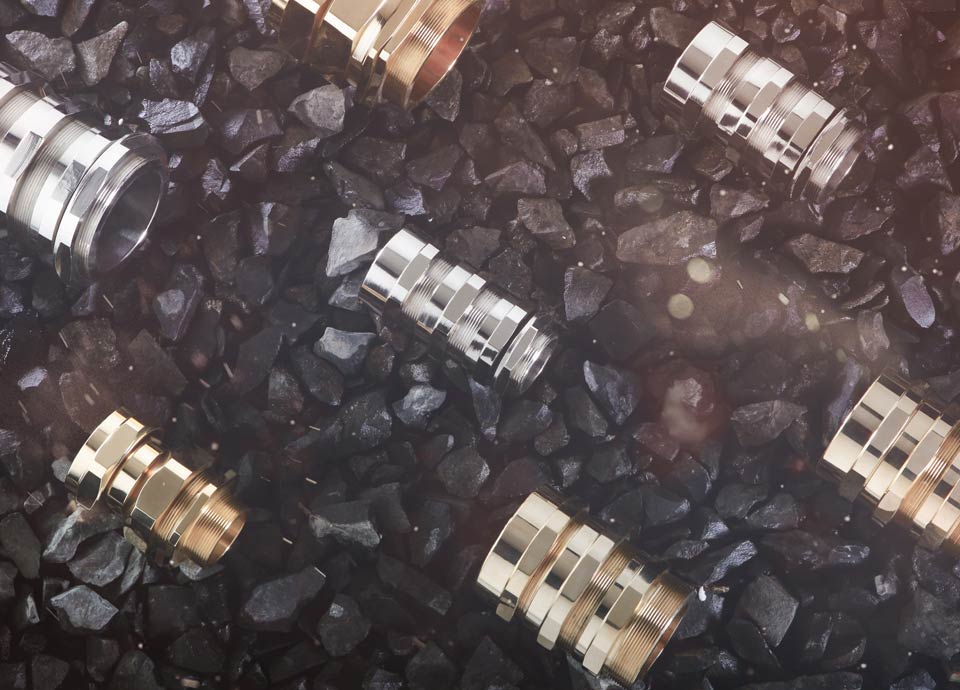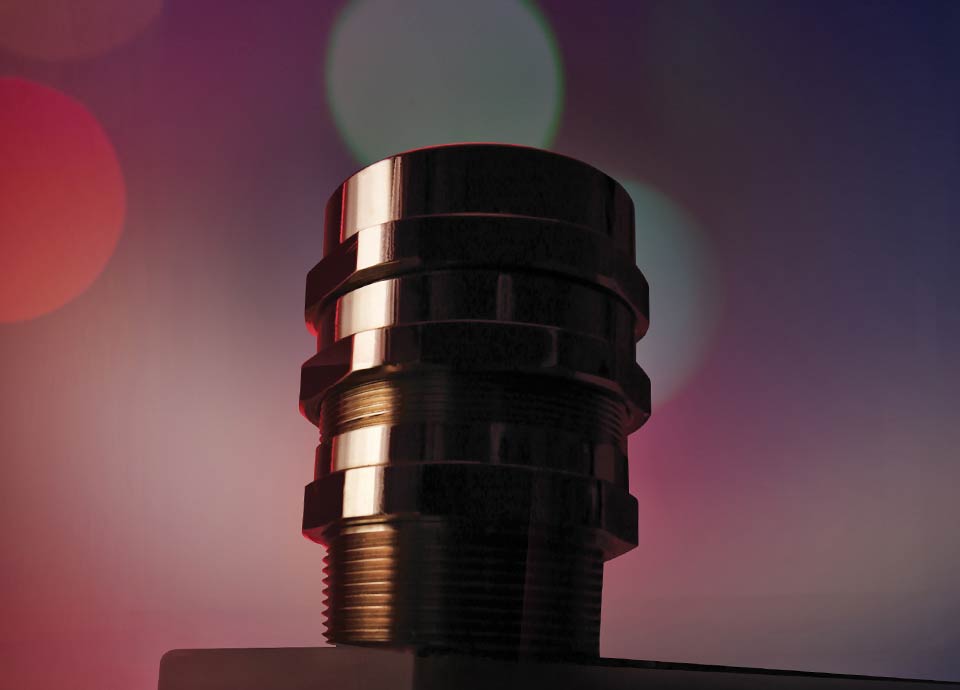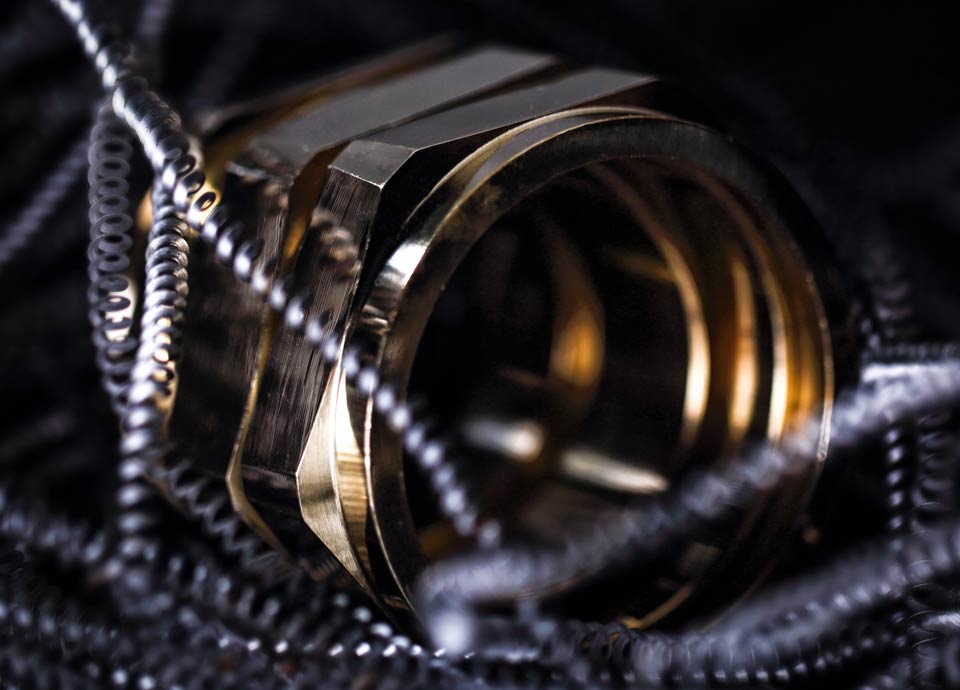What is a Cable Gland?
In today's world, electrical cables are the backbone of modern infrastructures, they power everything like homes, businesses, transportation, industrial machinery, telecommunications, automation systems, oil and gas refineries Etc. Therefore, it is essential to ensure that all cables are properly installed and secured to prevent damage, malfunctions and reduce the risk of electrical hazards. A cable gland, also known as a cable connector, is a device used to secure the end of an electrical cable to the equipment it is being connected to, it ensures the proper functioning, reliability and safety of electrical systems.
The main feature of cable glands is their ability to provide strain relief (it absorbs the forces that might be exerted on the cable, such as tension, twisting, and bending). A cable connector consists of a seal between the cable and the equipment and it prevents liquids, dust, and other contaminants from entering the equipment. We have in-house facilities to manufacture high quality cable gland accessories.
Cable glands are manufactured in a variety of materials, sizes, and shapes to accommodate different applications. The most common materials used for cable glands are brass, stainless steel, aluminum, and plastic. Brass, stainless steel, and aluminum are preferred in harsh environments where the cables are exposed to chemicals, moisture, and extreme temperatures. We design and manufacture cable connectors for armoured and unarmoured cables.
Cable glands are essential to be fitted for the majority of electrical installations. The selection of gland type depends on a number of factors:
- Type of installation: domestic, commercial or industrial
- Indoor or outdoor environment
- Explosive atmosphere
- Corrosive atmosphere
- Cost
Cable glands are ‘critical safety’ devices in the overall electrical system of a plant or installation. The importance of selecting and using the correct cable gland type cannot be overlooked. There are various types of cable glands from the basic ‘A’ type gland right through to the compound barrier gland.
Types of Industrial Cable Glands
BS 6121 specified requirements for the design and construction of cable glands and gave type designations to glands.
The following designations are sometimes used by cable gland manufacturers in their product codes. The basic designations of the glands where as follows:
- Type A1. For unarmoured cable with an elastomeric or plastic outer sheath, where the function of the gland is to secure the outer sheath of the cable.
- Type A2. As type A1, but with an IP68 seal between the outer sheath and gland.
- Type A3. As type A1, but with an electrical bond for the metallic inner sheath.
- Type A4. As type A2, but with an electrical bond for the metallic inner sheath.
- Type B. For armoured or wire braid cable, where the function of the gland is to secure the armour or metallic braid and to provide electrical continuity between such armour or braid and the threaded fixing component of the gland.
- Type C. For armoured or wire braid cable with elastomeric or plastic outer sheath. As type B, but with an IP68 seal between outer sheath and gland.
- Type D1. For armoured or wire braid cable with elastomeric or plastic outer sheath. As type B, but with an IP68 seal between inner sheath and threaded fixing component.
- Type D2. As type D1, but with an electrical bond for the metallic inner sheath.
- Type E1. For armoured or wire braid cable with an extruded elastomeric or plastics inner sheath and elastomeric or plastics outer sheath. As type C, but with an IP68 seal between inner sheath and gland and between the inner sheath and threaded fixing component.
- Type E2. As type E1, but with an electrical bond for the metallic inner sheath.
Glands of type B, C, D1, E1 and E2 are suitable for armoured or wire braided types of protection shall be identified by a suffix, added to the designation, to indicate the type of protection for which the gland is suitable. The suffix for each type of protection shall be as follows.
| Single wire armoured | W |
| Pliable wire armoured flexible | T |
| Wire braided | X |
| Aluminium strip armoured | Y |
| Double steel tape armoured | Z |
Cable Gland Types
Cable Glands ‘A’ Type
‘A’ type glands more commonly known as ‘stuffing’ glands. There are two types of ‘A’ gland. A1 and A2, A1 is retained on the cable whilst the ‘A2’ gland seals and retains on the cable.
- Suitable for unarmoured, plastic or rubber sheathed cables.
- Indoor and outdoor applications.
- For unarmoured, plastic or rubber sheathed cables.
- Suitable for most indoor and outdoor applications.
- Plastic or brass
- Seal rated to IP68 (A2 version)
A1 Cable Gland – Plastic only (IP4X) non-certified version only.
A2 Cable Gland – Plastic and/or brass (IP68) non-certified and certified versions available.
Cable Glands ‘B’ Type
Suitable for single wire armoured, plastic or rubber sheathed cables.
- Application – for use in dry, indoor situations only.
- Brass only
- IP30
Cable Glands ‘C’ Type
Suitable for cables that are:
- Plastic or rubber sheathed
- Extruded or lapped bedded
- Armoured or braided
- Outer seal grips sheath of cable
- Seal rated to IP68
- For use in most climatic conditions weatherproof and waterproof.
- Brass or Stainless Steel
- Design has separate armour locking ring.
Cable Glands ‘E’ Type
Suitable for cables that are:
- Plastic or rubber sheathed
- Extruded or lapped bedded
- Armoured or braided
- Outer seal grips sheath of cable
- Inner seal grips bedding layer of cable
- Inner and outer seal rated to IP68
- For use in most climatic conditions weatherproof and waterproof.
- Brass or Stainless Steel Design has separate armour locking ring.






